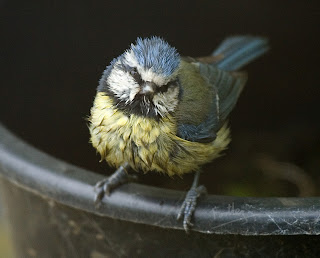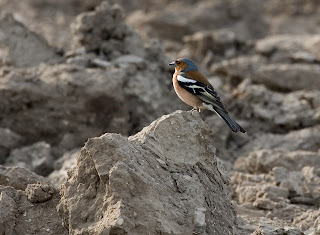One evening on our caving expedition I heard about a cave where a complete bear skeleton is lying on the floor. This sounded like an excellent photographic opportunity and a chance to see something quite unusual. So we organised the kit we needed to descend the 20 metre deep vertical entrance shaft to the cave, and assembled the camera kit. Once safely down the vertical drop, we explored the two well decorated chambers in the cave, and photographed the bones from several animals. But we could not see anything which looked large enough to be a bear.
 |
| Fine formations in the first of the two chambers |
 |
| More formations in the first of the two chambers |
 |
| Skull of some sort of big horn sheep |
 |
| Complete dog skeleton |
 |
| Another dog |
 |
| A third dog |
The cave entrance consists of a steeply sloping sided pit before it turns into a vertical shaft dropping 20m to the floor. It appears to have acted as a natural trap, catching unwary animals who have lost their footing and fallen to the bottom. The animals appear to have survived the initial fall, but being unable to escape they eventually just laid down on the cave floor and died. Caves tend to protect things from natural erosion, or from being buried under the soil which accumulates on the surface. So bones like these can remain almost perfectly preserved for thousands of years.
Disappointed that we did not find the bear, we returned to the surface at least happy with an excellent photography trip underground. In the bar that evening we happened to see some photographs taken a couple of days earlier in the same cave, and there were pictures of a great bear skeleton just lying on the floor! How could we have missed that? After finding out where exactly it was located, we made another visit one evening later in the week. This time we found the bear. It is quite large compared to the other animal skeletons we found, but due to the bones having become calcified, it blends into the floor surprisingly well. We had to position our flashes at a low angle to cast shadows so that the skeleton stood out from the floor.
 |
| Tony 'Badger' Radmall with the bear skeleton |
 |
| Bear skeleton partially calcited into the floor |
In addition to the photographs posted here, I took stereo pairs of all the bones we photographed in this cave, with a plan to generate some 3D images of what we recorded on this trip. These visits were to start a long association with this cave for me, and resulted in several further photographic trips to this special place over the following years.



























